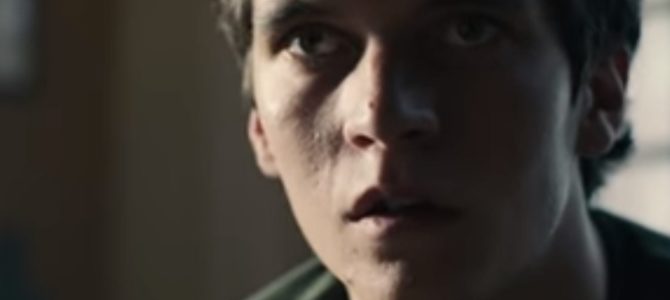
Major spoilers below.
British writer-creator Charlie Brooker’s dark near-future anthology series “Black Mirror” has played on technophilia and technofear since the first episode aired on Channel 4 in Britain in 2011. As a cult following expanded into an international audience, the show has migrated to the broader and larger-budgeted vistas of Netflix, and a fifth series is on the way later in 2019.
But for now we have the first “Black Mirror” movie, and it’s quite a lot in itself: “Bandersnatch,” a breakthrough experiment in audience interactivity that is driving Internet obsessives to geek out over the endless potential story permutations. Professional reviewers are granting it a milder but still admiring thumb’s-up. But will it be a ground-breaker for Netflix, opening up new vistas of visual storytelling, or go down as a bold novelty one-off?
So what’s unique about it? It’s a setup reminiscent of those 1980s choose-your-own-adventure paperbacks: At various points of the movie, you make decisions for Stefan Butler, a 19-year-old fledgling video-game designer in 1984 London.
What It Looks Like You’re Getting Into
Butler (played by “Dunkirk’s” Fionn Whitehead) has a project based on a book that was among his dead mother’s possession, a doorstop of a science fiction novel called—you guessed it. Stefan takes his “Bandersnatch” demo to hot gamemaker Tuckersoft.
The enigmatic Colin is Tuckersoft’s brilliant young game designer, taciturn but seemingly willing to help Stefan. Caught between sniping with a cold, secretive father and commiserating with his empathy-oozing therapist, Stefan drives himself, or is driven, literally crazy trying to complete and emulate the complex multiple narratives of the source novel.
(For extra credit: Bandersnatch was also the name of an actual abandoned video game project by Liverpool-based Imagine Software, which according to Wikipedia went bankrupt on July 9, 1984, the day this movie begins. The word comes from an imaginary creation of author Lewis Carroll.)
Watching “Bandersnatch” on Netflix requires some selection-capable functionality (e.g., a computer mouse) because the movie at various points makes you choose between two options, each leading Stefan down a different narrative path. Some choices are silly, like which cereal Stefan will have for breakfast. Other decisions are much more momentous, and some are eventually forced, suggesting there are limits to free will, a suspicion Stefan begins to pick up on.
There’s More Down That Thread
The Hollywood Reporter got a peek behind the mirror and found 250 different segments and five endings with multiple variants, with more than 1 trillion possible combinations of story based on the decisions viewers make. One convoluted path ends at an old-fashioned “Easter egg” — a playable ‘80s-style video game named after a “Black Mirror” episode.
There are several references to previous episodes scattered within “Bandersnatch.” The story gets more “meta” as it goes, as the parallel tracks of our choices and Stefan’s doubts about his reality begin to join up. Stefan in his paranoia suspects he is being controlled by outside forces, imagining a bizarre “streaming” entity from the 21st century that calls itself “Netflix.”
Then it dawns on you that he’s right: We are controlling him. The enemy is indeed us. A New York Times critic wrote: “The idea behind the interactive push is simple: Viewers will care more if they are complicit.” Not only can you not have the story of “Bandersnatch” without that conceit of control, the story is the conceit.
It’s a Video Game Movie
All this makes “Bandersnatch” rather difficult to discuss in the conventional way, but let’s give it a shot. It’s directed by David Slade, who also handled one of “Black Mirror” season four’s best efforts, the sleek, minimalist “Metalhead.”
“Bandersnatch” is quite different, set not in the near future but in a very specific past (July 9, 1984, remember). For this 1980s nerd, there were disappointingly few scenes of the game itself, but they look great, resembling a genuine leap for 1984 technology while also looking very much like 1984 technology.
Yet the story has a slightly airless quality, especially after some scenes become familiar through repetition. There’s no conventional emotional arc of highs and lows, downfalls and redemption. There are memorable scenes, depending on the choices you make, some gruesome, some darkly playful, like when Colin introduces Stefan to LSD, or when the therapist breaks out the swords.
The cast feels a little underpopulated, although one can sympathize with filmmakers who had enough story branches to attend to without juggling additional characters. One can only imagine what the script looked like, although there’s no visible strain in the actors’ performances.
It’s alternatively refreshing and unnerving to watch a movie without having an idea when it will end. Like life, your version of “Bandersnatch” is based on decisions you haven’t made yet (or have not yet been made for you—unless it’s all predestined….wait, am I in a “Black Mirror” episode?).
It’s less a narrative than an experience. There is no chance to completely lose yourself in the story when you’re constantly being pulled out of it and made to click. Then again, it’s also not something you can casually keep an eye on while scrolling on your phone.
Caveats aside, “Bandersnatch” is a tour de force technical achievement. Although Brooker has previously sworn off message movies, in “Bandersnatch” this experimental medium truly is the message. As you make the choices for Stefan, the nagging question surfaces: Who or what is making choices for you?









